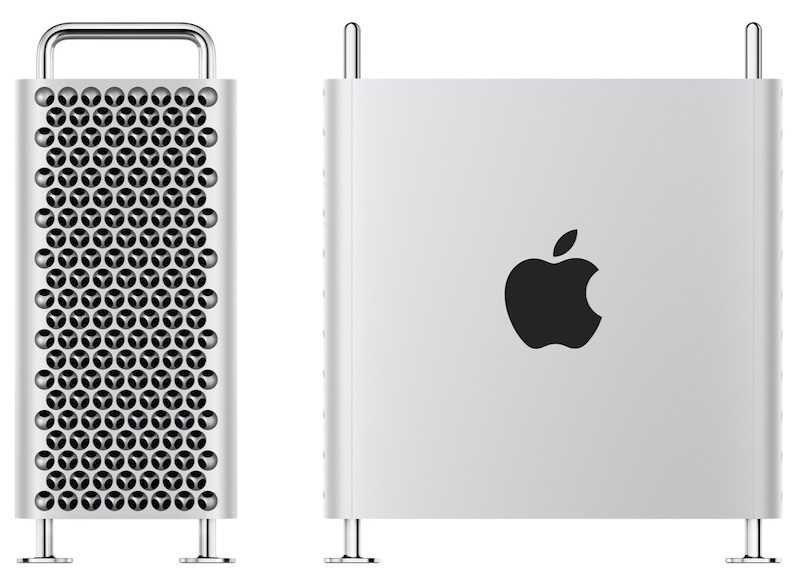This may put a dent in the MPX module hopes:
As part of the transition to Apple Silicon, Apple is designing a new Mac Pro that has a smaller form factor, reports Bloomberg. The new Mac Pro is said to have a design that looks like the current design, but in a more compact enclosure that's "about half the size." It is not known if the new...

forums.macrumors.com
Shouldn't have much impact one way or the other. Especially, if Apple just shrinks the height to get to "half the size".
Going to just one MPX Bay would still fix in "half" of the Mac Pro height. Pretty likely it is the other slots; 6-7 or 5-7 that would get extracted as they are partially covered by the middle fan of the full sized Mac Pro that would get tossed along with the second MPX bay to say height. Tossing that second (middle) MPX Bay would get rid of about 1/3" of the height if driving toward "about half the size". Could drop slot 8 also if put those I/O sockets on the logic board.
Getting rid of the MPX connector in Bay 1 would likely mean the new system to solely using the integrated GPU to drive the system Thunderbolt 3 (or 4) needs. That would be a useful entry level configuration but probably not one they'd want to be stuck with in all configurations. Dropping MPX connector also means more cables internally. Apple is into
more cables inside of an even smaller system? Probably not.
IMHO, it is likely loosing slots in this "half sized" Mac Pro because the Apple Silicon SoC is relatively much lower on PCI-e lane provisioning capabilities than the Xeon W 3000 series. Might be looking at something as low as 32-36 lanes total. The slots are disappearing because there is less to feed them with ( without deeply thinning out the aggregate bandwidth. )
Decent chance they are just looping the 'iMac class" SoC package infrastructure to cover this system also. ( core count and some other features may different but the same physical packaging. ). This is go get to a cheaper Mac Pro in terms of SoC costs for Apple also ( as well as being more affordable Mac Pro for customers ).
Whatever is on the GPU MPX module would probably work in the Mac Pro 2019 also if proper drivers are put into the x86-64 version of macOS 11.
P.S. If Apple cuts the "Depth" ( currently 8.58 inches) [ 'width' of Mac Pro if looking head-on at the holes in the front ] or width ( currently 17.7 ) [ 'depth' when look head-on. ] then that would blow up the MPX modules. But that would also blow up a large quantity other add-in card slot solutions too. Kind of pointless after the back-track from the MP 2013 to one again go back to only Apple custom cards.
They can extremely easily avoid that by taking most (if not all ) of the half by just reducing the height of the tower. ( can shrink the feet and handles if aiming for more literal desktop placement of the system. ) . Dropping all that high grade aluminum will also reduce the weight. ( very little need for wheels and shipping costs and lower environment footprint in shipping. )
Also if did a rack version could get two side by side. So not as much bloat if new multiple phsyical systems. Shrinking on multiple dimensions probably doesn't buy as much ( the rack is stll just as deep as it was and still not going to compete with 1U-2U optimized enclosures is shrink to 3U. ). RAM/SSD module upgrades would be a bit less awkward if get rid of much of the "backside" ( "bottom side in rack model) infrastructure. could shave incremental amount on "rack height" there that probably doesn't matter much in the big picture.


